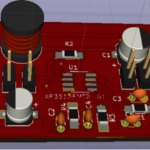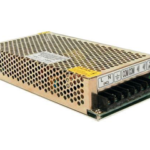This tutorial explains the process of ac to dc conversion and why it is needed. The electricity that is delivered to our home is mainly AC (Alternative Current). Different countries have different standards for domestic AC lines ranging from 100 V to 220 V. Even so, most home appliances are DC (Direct Current)-operated, although devices like motor and incandescent bulbs are AC. Therefore, the electricity that we receive at home is AC, requiring a need for an ac-dc converter for the operation of DC devices.
Topologies of ac-dc conversion – isolation
Non-Isolated power supply
In this converter, one of the AC main lines is common at input and output. That’s why they do not provide any isolation between 220 V AC and output. The advantages of non-isolate power supplies include simplicity of design, the need for fewer components, less cost, and small size. The disadvantage is the increased risk of electric shock.
Isolated power supply
These types of converters use a transformer for conversion of AC into DC. The transformer provides isolation or protection between high-voltage AC lines and the output in the event of a short circuit. While they are safer to use, there is increased cost due to the transformer, circuitry tends to be more complex, and they are larger than non-isolated power supplies.
Switching frequency – transformer system
This is the basic method for conversion of AC into DC. At input, a step-down transformer transforms the 220 V AC into a lower AC voltage (like 24 V) then through filters and ICs, a regulated DC is obtained. This method tends to be less complex and generates less noise but is also larger in size and less efficient due to additional heating losses. Below is the step-by-step process of this approach.
For more detailed information regarding this approach, please refer to the previous experiments on power supplies.
Switching topology
The basic idea behind this topology is to reduce the size of the circuit by increasing the switching frequency. Therefore, this topology does not use a 50Hz transformer at the input side which reduces the overall size of the circuit as well as cost. Basically, the high voltage AC (in 50Hz) is converted into a DC signal through rectification and filtering. The DC is then chopped off in a high frequency ON OFF AC (in KHz) pulse by switching circuit; the DC is then reconverted back to low-level DC by rectification and filtering. The advantages of this topology include small size, good efficiency, and less heat dissipation; however, it is complex to design and results in high switching losses.
The switching topology is again implemented in two ways:
- Non-Isolated – In this method, we will not use any transformer in the circuit, which makes one AC line common to both input and output. These supplies only use a switching IC with some passive and active components, which makes them less costly. These systems can be used in LED lighting, adapters, etc, where there is no danger to human life.
- Isolated– In these types of power supplies, the circuit uses a high-frequency transformer, and the transformer provides the galvanic Isolation to the circuit. In this isolation, the signal can pass through the transformer, but AC current and a high voltage are blocked. It is primarily implemented in medical equipment and household devices.
Major types of non-isolated power supply
For ac-dc or dc-dc conversion, these are some commonly used power supplies. We have already designed dc-dc converter power supply. To get more details about this, please refer to the tutorial on SMPS power supplies.
Now, we will design an ac-dc non-isolated converter power supply in this series of experiments.
Major types of isolated power supply
These supplies use high-frequency transformers. Some converters also use transformers as energy storage elements. An example of such a converter is the flyback converter, where the transformer is specially designed for energy storage.
You may also like:
Filed Under: Power, Tutorials










Questions related to this article?
👉Ask and discuss on Electro-Tech-Online.com and EDAboard.com forums.
Tell Us What You Think!!
You must be logged in to post a comment.